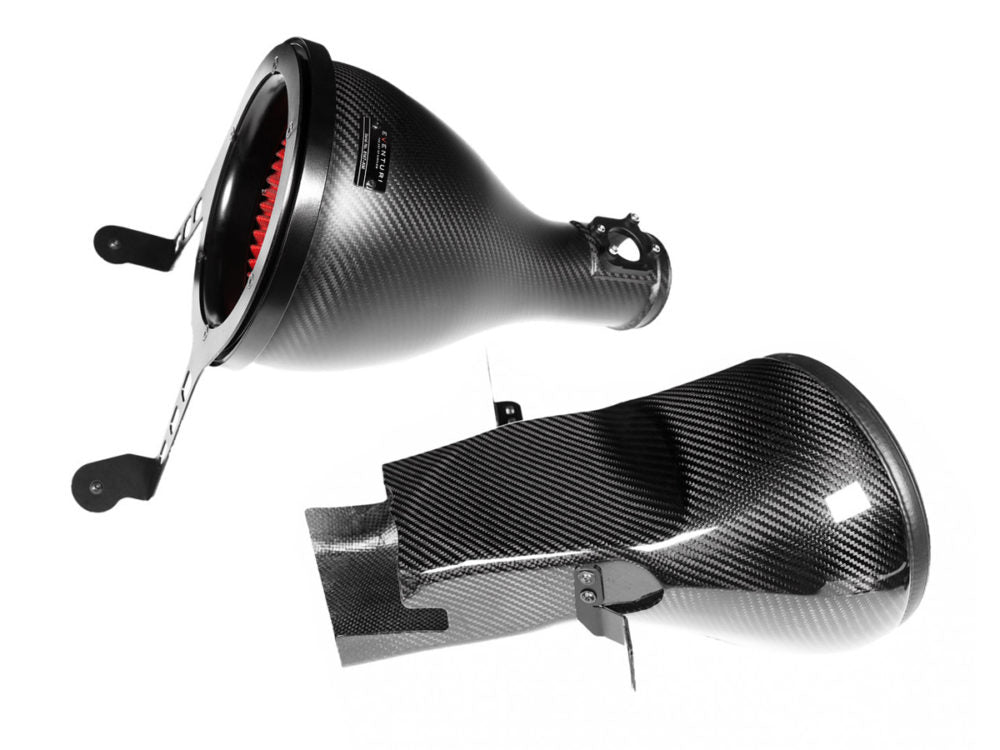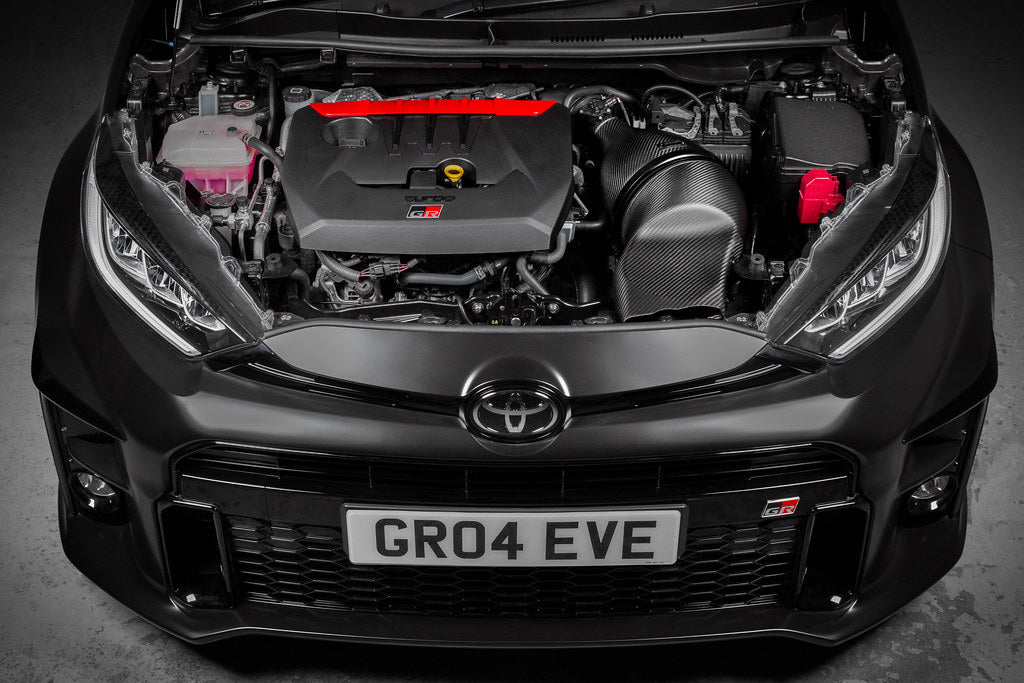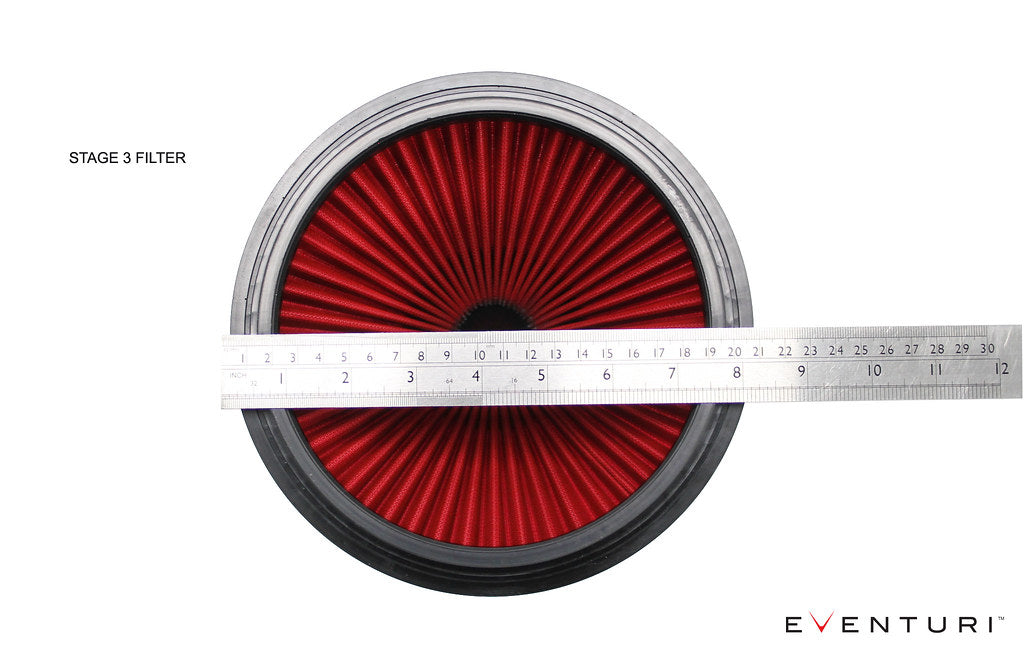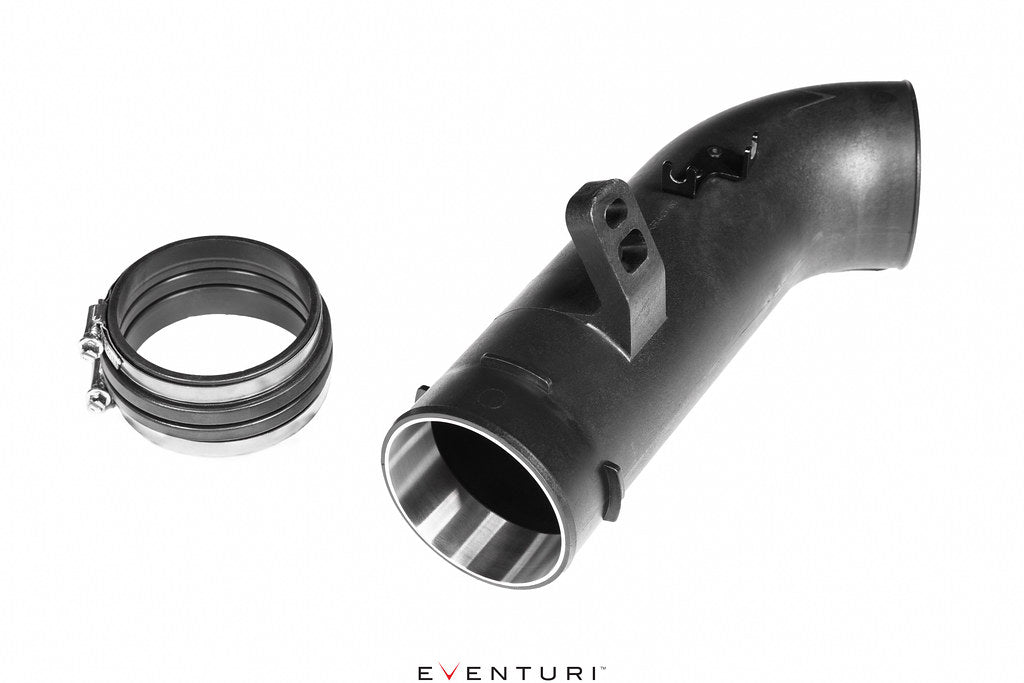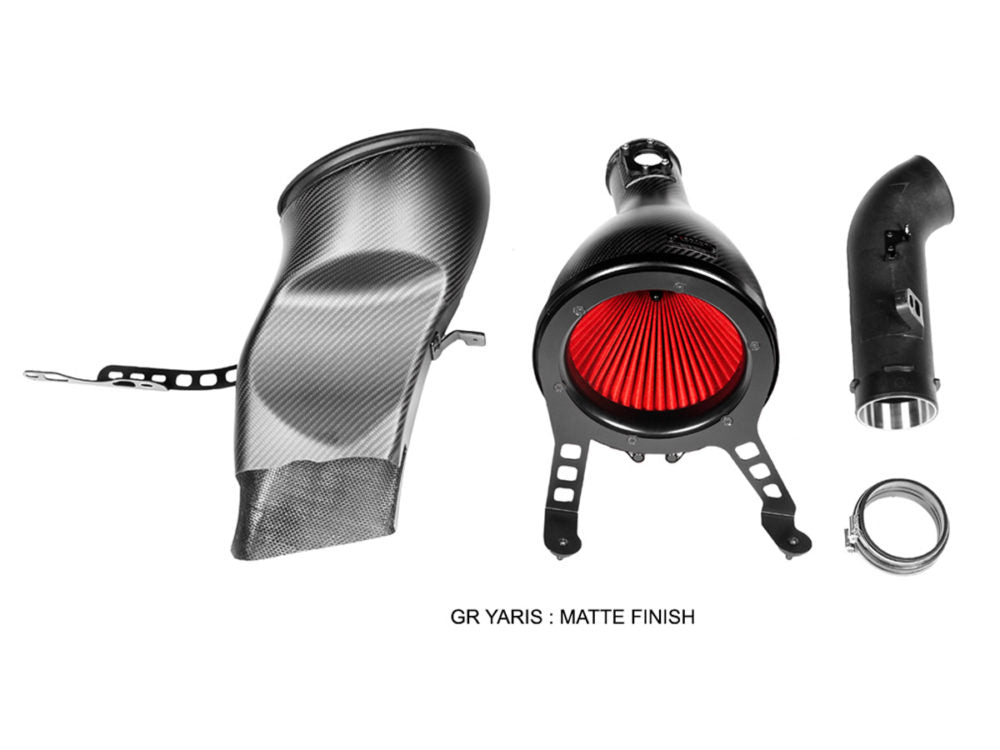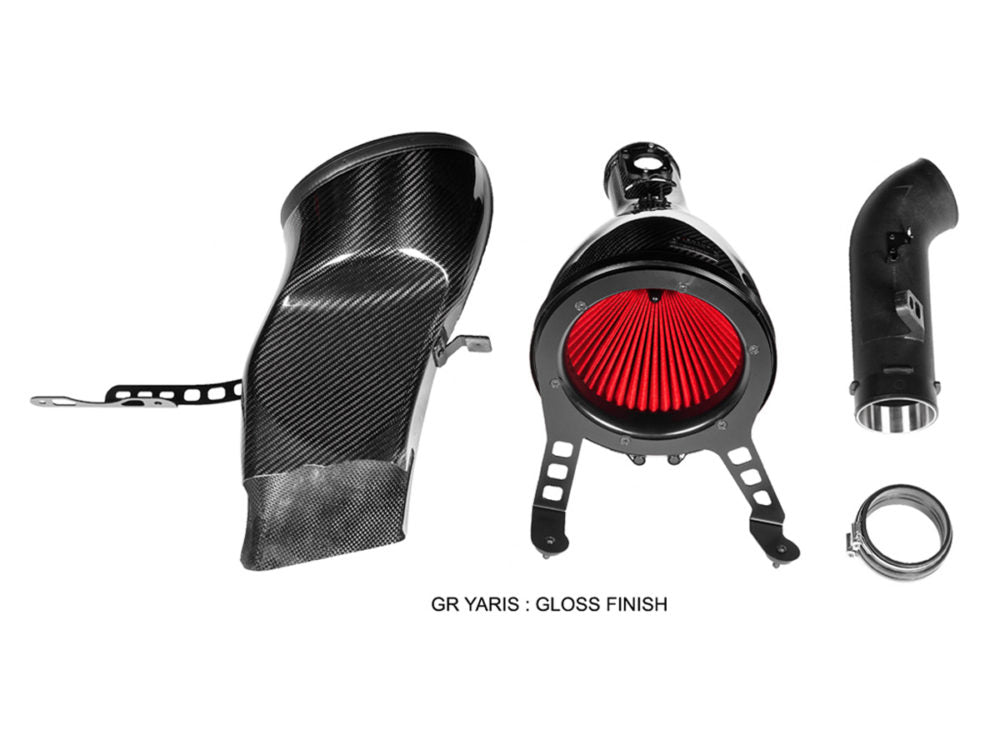Description
Eventuri Toyota GR Yaris Carbon Fibre Stage 3 Air Intake System
Available in premium carbon fibre gloss or matte finishes. Performance Increase : 15hp, 18ft-lb
The GR Yaris Intake has been developed through extensive data logging of temperatures, flow rates and dyno testing. Since this is a turbocharged engine, heat and volume were the main considerations during development. This intake system has been developed to offer the highest possible flow rate whilst maintaining the lowest intake temperatures possible. Each component has been designed to provide the turbo with a smooth and free flowing path. By ensuring a sealed system we have improved on the IAT’s of the OEM airbox whilst at the same time increasing the internal volume to reduce the pressure drop and therefore reduce pumping losses of the turbo. In doing so the turbo is able to operate more efficiently and therefore reaches peak boost sooner to produce a net performance gain.
The filter itself has an outer diameter of 210mm or 8.3″ with a filtration surface area of over 130,000mm^2. The patented Venturi housing has been designed to provide the maximum internal volume possible for the GR Yaris and provides laminar flow to the turbo tube.
The Eventuri GR Yaris intake system consists of a number of components engineered to perform a specific purpose and fabricated to the highest of standards. We use 100% pre-preg carbon fiber with no fibreglass which means we can achieve a smooth internal surface to maintain smoother airflow. Here are the details for each component and the design ethos behind them:
Kit IncludesCarbon Fiber Patented Venturi Filter Housing with integrated MAF sectionBespoke High Flow Dry Cone FilterCarbon Fiber Inlet DuctRear Tube Manufactured To OEM SpecificationsCustom Made HardwareLaser Cut Stainless Steel BracketsCustom EPDM HoseCNC Machined MAF Boss and Bracket MountsPerformance
The filter housing comprises of our bespoke generation 2 filter, aluminium inlet cowl, stainless steel bracket and the integrated MAF section. The carbon pod shrouds the reverse mounted filter and smoothly shapes the airflow down to the MAF section which then connects to the rear inlet tube. This changes the flow path from the OEM airbox where airflow enters the front of the airbox, changes direction by 90 degrees to travel through the panel filter and then changes direction again by 90 degrees to move through the MAF section. Our system is a lot more direct with airflow entering the front of the filter housing and and moving into the MAF section without any abrupt direction changes. The result is a smoother path from the filter to the turbo inlet tube and therefore the turbo is able to function with less drag.
In order to achieve the highest flow rate possible we used our largest filter which has an outside diameter of 210mm or 8.3″ and when flow tested with a housing using a 4″ opening is able to flow up to 940 CFM at 28″ H2O. The filter medium is ISO tested to ensure that filtration is in line with OEM standards and is also dry. The filter is constructed with our signature flow cones to aid in the Venturi housing principle.
Our patented filter housing has a smooth reduction in cross sectional area as it shrouds the filter and tapers down to the tubing. This geometry invokes the Venturi effect where the airflow accelerates whilst maintaining laminar conditions. It can be thought of as a large velocity stack – below is a diagram to show the comparison between our patented design and a regular intake system. Our bespoke filters aid the airflow moving through the housings and allow for an even velocity profile as the airflow exits the housings. Further details can be read in the Technology and Filters pages.
The duct feeds the filter housing with ambient airflow from the front bumper/grill section. We maintained as large a volume as possible all the way to the front of the engine bay and derestricted the front of the duct by creating an opening just behind the bumper where the bonnet would close. This area of the engine bay stays at ambient temperatures while the car is in motion and so the intake is able to draw in air without being restricted to the small opening behind the grill. We did not extend the duct to the other side of the engine bay to use the second opening in the grill simply because of the abrupt flow angle and the restriction in space between the engine and the bonnet catch. Furthermore, using the second opening would stop cold air from entering the engine bay to assist with reducing overall heat soak. Finally the duct seals against the filter housing with an expanding rubber seal which allows for movement of the filter housing with the engine without letting hot air in.
Part Numbers
EVE-GR4-CF-INT – Toyota GR Yaris Intake Gloss Carbon
EVE-GR4-CFM-INT – Toyota GR Yaris Intake Matte Carbon

